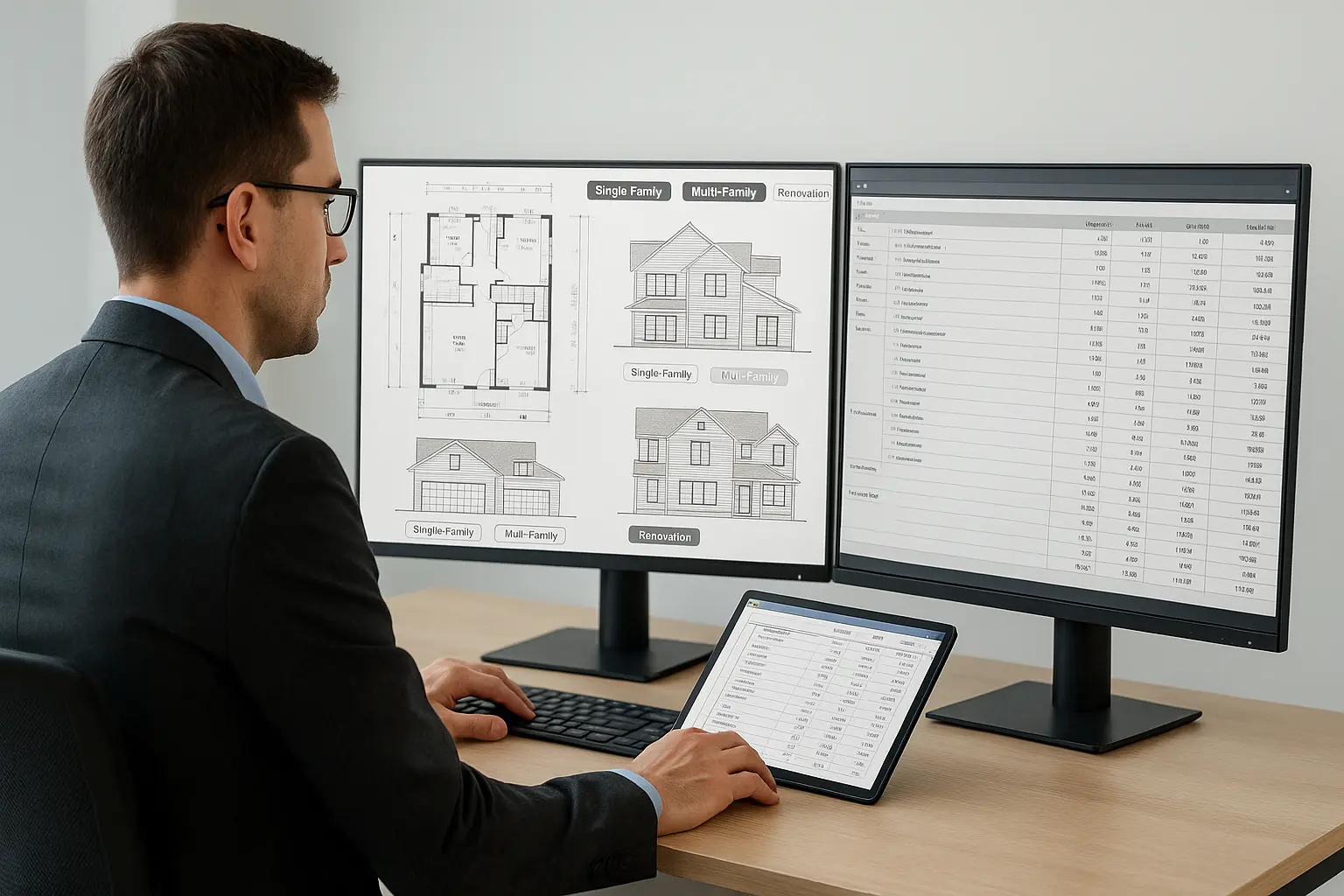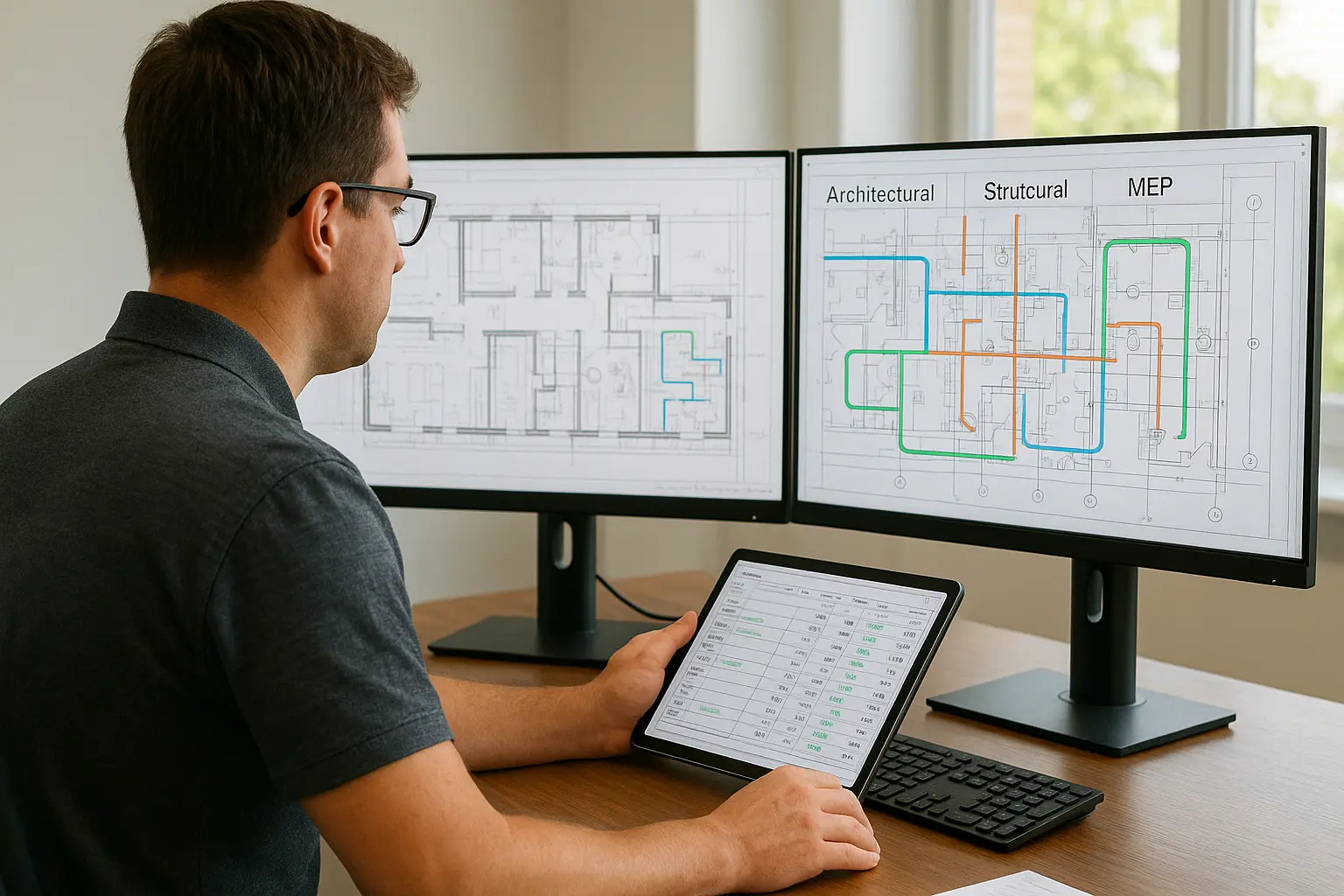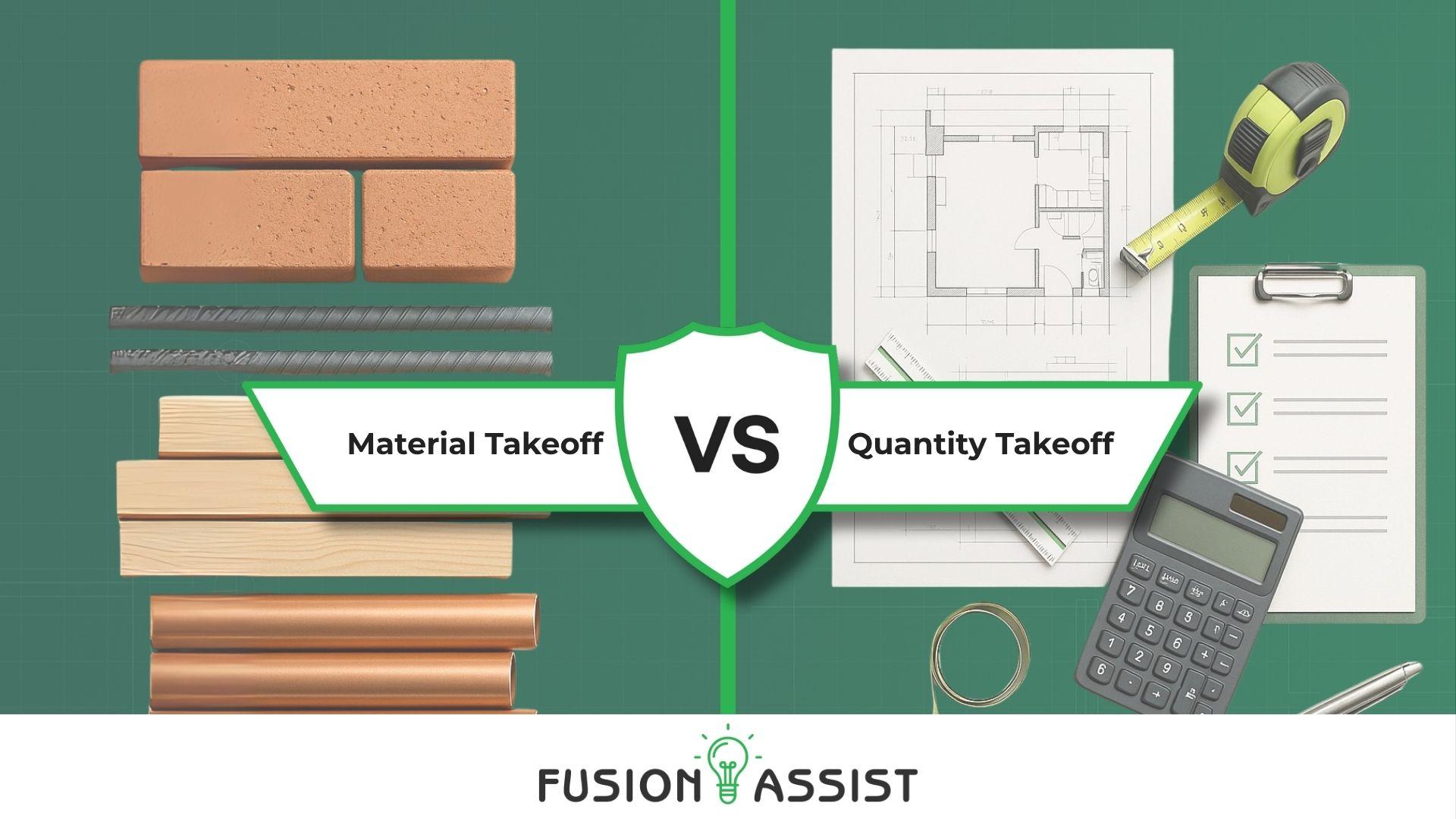A technical whitepaper-style guide for residential estimating in the U.S., covering single-family, multi-family, and renovation workflows. Learn the full methodology for accurate and compliant estimates.
Commercial Estimation Workflow
Learn the complete commercial estimation workflow from project review to proposal. Build accurate, profitable bids and protect your margins with Fusion Assist.
Prevailing Wage Estimation (U.S.) | Accurate Labor Costing for Public-Funded Projects
Learn how to estimate labor costs for U.S. federal and state-funded construction projects under prevailing wage laws. Understand Davis-Bacon requirements and see how Fusion Assist simplifies accurate bid preparation and compliance.
HVAC Estimating 101 — A Complete Guide for Contractors
Learn how HVAC estimating works — from takeoffs to labor and material costs. This guide explains each step to help contractors prepare accurate HVAC bids with Fusion Assist.
Electrical Takeoff Checklist — Everything Contractors Need for Accurate Bids
Use this complete electrical takeoff checklist to prepare accurate bids and material estimates. Learn key steps, quantities, and best practices from Fusion Assist’s estimating experts.
Value Engineering in Construction
Learn how value engineering in construction helps contractors reduce costs without sacrificing quality. Explore stages, examples, and benefits with Fusion Assist.
Digital Takeoff vs Manual Takeoff
Discover the difference between manual and digital takeoffs — speed, accuracy, and ROI. Learn why U.S. contractors are switching to digital estimating with Fusion Assist.
Construction Estimate Cost in 2025
Discover how much a construction estimate costs in 2025. Compare real pricing for residential and commercial projects, understand cost factors, and learn how professional estimators save contractors time and money.
Material Takeoff vs Quantity Takeoff: 7 Essential Differences U.S. Contractors Must Know
Discover the 7 essential differences between Material Takeoff vs Quantity Takeoff. Learn how U.S. contractors can use accurate estimating methods to improve bids, reduce errors, and win more projects.
Construction Estimating
In today’s competitive construction landscape, precision is not just a goal; it’s a requirement. A successful project is built on the foundation of an accurate and detailed cost estimate. As a leading construction estimating company, Fusion Assist provides developers, contractors, and project owners in the US and UK with the critical financial insights needed to plan, bid, and build with confidence.
Our expertise transforms complex project plans into clear, actionable data, ensuring your budget is realistic and your bids are competitive.
The Construction Project Cost Breakdown
Understanding what goes into the total cost of a project is the first step toward effective budget management. A professional estimate goes far beyond a single number; it provides a comprehensive breakdown of all anticipated expenses. At Fusion Assist, every estimate we produce includes a detailed analysis of the following components:
1. Direct Costs (The “Hard Costs”) These are the expenses directly tied to the physical construction of the project.
• Materials: A detailed quantity takeoff and costing for every item, from concrete and steel to wiring and fixtures.
• Labor: The cost of the skilled workforce required to execute the construction, calculated based on man-hours and prevailing wage rates.
• Equipment: The cost of purchasing or renting all necessary machinery, such as excavators, cranes, and scaffolding.
• Subcontractor Bids: The costs associated with specialized trades like electrical, HVAC, and plumbing.
2. Indirect Costs (The “Soft Costs”) These are essential expenses not directly incorporated into the physical structure but are critical for project execution.
• Permits and Fees: Costs associated with municipal or council approvals and inspections.
• Site Management: Salaries for the project manager, site superintendent, and other administrative staff.
• Overhead: General business expenses, including insurance, office rent, utilities, and administrative support.
• Design & Engineering Fees: Costs for architects, engineers, and consultants involved in the project.
3. Contingency No project is without its surprises. A contingency fund, typically 10-20% of the total direct and indirect costs, is a crucial allowance for unforeseen challenges, changes in scope, or market price fluctuations. We help you calculate an appropriate contingency to protect your project from risk.
How to Estimate Construction Costs: Our Methodology
Estimating construction costs is a sophisticated process that evolves with the project’s lifecycle. Our team is proficient in multiple methods to provide the right level of detail at the right time.
Stage 1: Order of Magnitude / Square Foot Estimate Used in the very early stages of planning, this method provides a ballpark figure based on the project’s size (square footage or metres) and intended use. It’s ideal for initial feasibility studies.
Stage 2: Systems & Assemblies Estimate As the design develops,
this more detailed method estimates costs based on major systems (e.g., the entire roofing system, the foundation, the HVAC system). It provides a more refined budget for decision-making during the design phase.
Stage 3: Unit Price / Detailed Takeoff Estimate
This is the most accurate and comprehensive method, forming the core of Fusion Assist’s services. Our estimators perform a meticulous “takeoff,” quantifying every single material component and labor task from the project blueprints. Each unit is then assigned a precise cost. This granular detail is essential for creating competitive bids, managing procurement, and controlling the final project budget.
The Construction Estimator:
Your Project’s Financial Strategist
What is a construction estimator? A professional estimator is far more than a number cruncher; they are a vital strategic partner for your project. The role of an estimator on your team is to:
• Provide Financial Foresight: By identifying and costing every element of the project, they create a clear financial roadmap from start to finish.
• Manage Risk: They identify potential financial risks, such as material price volatility or labor shortages, allowing you to plan accordingly.
• Optimize Budgets:
A skilled estimator can suggest alternative materials or construction methods (value engineering) that can reduce costs without compromising quality.
• Ensure Competitive Bidding: For contractors, our detailed estimates provide the confidence to submit bids that are both competitive enough to win the job and robust enough to secure a profit.
The team at Fusion Assist embodies this role, bringing decades of combined experience across a wide range of residential, commercial, and industrial projects in both North America and Europe.
Partner with Fusion Assist for Estimating Excellence
Whether you are validating a budget, preparing a bid, or seeking to control project costs, our expert team is ready to provide the clarity and accuracy you need.
To learn more about our commitment to precision and client success, please visit here.
For a detailed, data-driven estimate on your next construction project, contact us today.
• Request a Quote via our Online Form: Contact Us
• Speak with an Estimator:
o UK Office: (020) 7664 8623
o USA Office: (214) 308-1582
• Email Your Plans: info@FusionAssist.com










